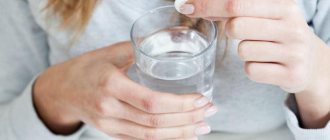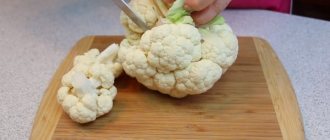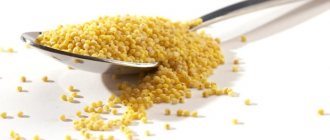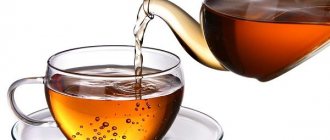Nettle for lactation today can be recommended not only by grandmothers who carefully preserved useful recipes, but also by doctors. It is understandable: the power of the healing plant is enormous! You will learn why this particular plant received the proud title of a fighter for lactation, and how to take medicine from it.
For some reason, some mothers regard the lack of milk as a real disaster. Sometimes this problem even leads to giving up breastfeeding and a decisive transition to artificial formula. Save such desperate steps for extreme cases, and in all other cases, a lot of simple and yet effective ways to improve lactation will come to your aid. And folk remedies will be among the most popular.
Nettle during breastfeeding is a real salvation for many mothers who face problems with lactation. By the way, this situation is far from uncommon today; one might even say that it is commonplace. A decrease in the amount of milk or its absence at all is caused by a number of simple factors characteristic of the life of almost every mother. If lactation difficulties have not bypassed you, we would like to tell you about a popular remedy for combating the disease - nettle.
Nettle and its miracle effect
Dear mothers who are faced with lactation problems! What happened to you is definitely not a reason for frustration and worry. And all because we are in this trouble together, what? That's right - we'll survive! And we will survive easily and quickly. And a popular medicinal plant, nettle, can help with this.
When we get angry at it for the way it burns, we may not even suspect what a unique composition of valuable components lies in the plant. Among them are:
- ascorbic acid, the content of which in nettle is even higher than in black currant;
- tannins;
- microelements such as: copper, sodium, iron, iodine, calcium and magnesium;
- vitamins A, E and K;
- flavonoids and phytoncides;
- tannins;
- glycosides;
- a large number of proteins.

This amazing composition provides the unique properties that nettle can give to your body. Here are the most valuable of them:
- the plant strengthens defenses;
- increases the ability to resist harmful bacteria;
- improves metabolism;
- strengthens the walls of blood vessels;
- fights anemia;
- promotes healthy functioning of the cardiovascular system;
- restores the body's strength.
But for nursing mothers, the use of nettle for lactation of breast milk is of particular importance.
What is better for lactation - Apilak or Mlekoin?
Mlekoin or Apilak – which is better cannot be said for sure. Judging by the reviews, both drugs provide assistance during breastfeeding. Some women took both drugs alternately and achieved a significant increase in lactation.
- Mlekoin is a homeopathic medicine consisting of plant extracts. The advantage of Mlekoin is the possibility of long-term use and the composition does not cause side effects.
- Apilak saturates the body with useful ingredients, improves sleep, and increases overall tone. The medicine provides effective assistance during lactation crises, but often causes an allergic reaction.
Some doctors are convinced that Mlekoin, Apilak and their analogues have little effect on milk production. Rather, the placebo effect works: the woman believes that she is doing everything necessary for the child’s health and stops worrying, and the mother’s peace of mind is one of the main conditions for the fight against hypogalactia.
In addition to Mlekoin, other analogues of the drug are used to support and improve lactation:
- Lactogone;
- Milkal;
- Lactavit;
- Leptaden;
- Hipp tea.
Dr. Komarovsky, an expert in child nutrition, recommends the use of Apilak and other biogenic stimulants as an auxiliary measure. He considers the main way to restore lactation to be frequent breastfeeding and nipple stimulation.
The golden rule of gradualism
Some wild plants cause suspicion among mothers and doctors due to possible allergies. However, nettle dispels these doubts because it is characterized by a low percentage of negative reactions to it.
But like any new product, especially medicinal ones, nettle should be taken with caution to increase lactation: this is a prerequisite for a nursing mother during breastfeeding. Start therapy with the minimum dosage. After this, observe for some time the reaction of your body and, of course, the baby’s body to an unfamiliar remedy. If the first test went well, you can continue your treatment.
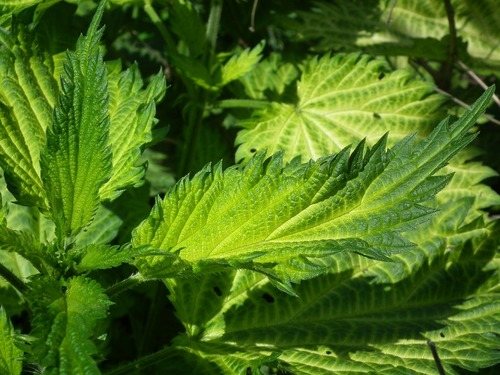
From the experience of mothers: what remedies helped maintain and increase lactation
Breast milk production may decrease or increase depending on various factors. Very often, nursing mothers worry that the baby is malnourished and remains hungry. Pediatricians and breastfeeding consultants recommend trying to establish lactation rather than immediately transferring the baby to artificial nutrition. There are many methods that will help a woman stimulate the formation of nutrient fluid. But the main, main methods are identified: frequent latching of the baby to the breast, as well as the emotional state of the young mother. With positive thoughts and love for the baby, everything will definitely work out.
How to brew and take
The real benefits will come from nettle not in its pure form, but in various recipes. We will tell you about them.
To increase lactation, nettle is used in various variations: you will definitely have plenty to choose from!
- An infusion based on nettle has long gained popularity among mothers. To prepare it you should take 1 tbsp. l. chopped herbs and pour a glass of boiling water. After infusing for 25 minutes, the healing agent will be ready. How to apply it? For a beneficial effect, 1 tbsp will be enough. l. 3 times a day. In addition to improving lactation, this decoction will give you a general strengthening effect for a weakened body.
- A decoction of nettles will also be useful. It is as easy to prepare as an infusion. Take 1.5 tbsp. l. plants and fill them with 450 ml. heated water. All that remains is to cook the mixture over low heat for 13 minutes and strain it. Take the decoction 2 times a day, slightly warmed, in a dosage of ¼ cup.
- Combining nettle with other valuable herbs is effective in improving lactation. The following recipe won the trust of mothers: nettle, dill and anise seeds are mixed in equal proportions to end up with 2 tbsp. l. and pour a glass of boiling water over this trio. After an hour, the product will be ready for use. Its permissible portion is 1/3 glass per day.
- A medicinal drink in which nettle is in harmony with honey will be not only healthy, but also tasty. This remedy is permissible only if the baby is not allergic to honey. To prepare the product, boil 1 tbsp in ½ liter of water. l. nettle seeds. This process should last 10-15 minutes. Then you need to strain the medicine and wait until it cools to about 30 degrees. Only after this add 1 tbsp. l. honey The need for cooling is explained by the fact that honey, when dissolved in hot water, loses its beneficial properties.
There is not much difference between all these recipes. This means that for one mother, a nettle decoction will be effective when breastfeeding, while for another, for example, an infusion will be more optimal. Therefore, choose what you like best.

Dosage and recipes
Nettle can be used in different forms during lactation.
Most often these are, of course, decoctions or infusions, both “salt” and in combination with other herbs. But in addition to drinks, this herb can be used to make soups, salads and even baked goods. In any case, its beneficial properties for feeding will remain. Like any other “innovations”, a nursing mother should take nettle carefully, starting with small portions – 1 tablespoon. Then, if there are no signs of allergy or intolerance, you can gradually increase the volume.
To increase the amount of breast milk, it is recommended to drink nettle infusions about half an hour before feeding. You can choose the recipe according to your taste or the presence of the necessary additives:
- Pour 25 nettle leaves into a liter of boiling water, bring to a boil and turn off after a minute. Leave for half an hour and take a third of a glass three times a day.
- Pour a glass of dried leaves with the same amount of boiling water, wrap and leave for about 1-1.5 hours. Take warm, three times a day.
- Mix a spoonful of dry nettle with a spoonful of yarrow and dill seeds, pour in 1 liter of boiling water and leave for at least 2 hours. Take chilled.
- You can drink nettle by adding it to your usual white, green or herbal tea.
In order for the plant to function as it should, you must follow the drinking regime. A nursing mother should drink at least 2-2.5 liters of liquid per day.
Nettle decoction for lactation is not the only option for using this herb. It can also be used fresh.
Nettle salad
100 g of wild garlic and nettle leaves, cut into small pieces and mixed with chopped boiled egg. You can season the salad with sour cream or refined vegetable oil.
Nettle soup puree
Boil broth from 200 g of beef, skimming off the foam. Then add chopped vegetables to it: 3 potatoes, a third of carrots, an onion. When the vegetables are cooked, remove the onions and carrots from the pan, and mash the potatoes with a masher. Add chopped nettle leaves (200 g) to the boiling soup and cook for 2 minutes, add salt to taste and remove from heat. Add the juice of one lemon to the finished dish, leave for a few minutes and serve with a boiled egg and a spoonful of sour cream.
Green Pie
You can buy ready-made dough or make it yourself. To do this, you will need to mix 200 g of flour, 100 g of cottage cheese, 100 ml of vegetable oil and a little salt. The dough is divided into two parts, one serves as the base of the pie, the second as the “lid”. For the filling, use chopped nettle leaves (300 g), herbs to taste (dill, onions, spinach, sorrel), fat cottage cheese (200 g) and sour cream (150 g). The top of the pie is brushed with a beaten egg and baked in an oven preheated to 180 degrees for about 30-40 minutes.
Nettle for hepatitis B is a safe and effective remedy that will help solve several problems at once. However, as in other cases, you should be careful with it. It is very important to follow the dosage and all precautions so as not to harm your health and the health of your baby.
Where to buy a plant
The easiest way is to purchase nettles at the pharmacy. But for nursing mothers who are not looking for easy ways or who trust only self-made products, we suggest collecting the plant in person. This will be especially relevant if the time you read our article coincided with the summer period.
For nettles, you only need leaves. Choose clean fields for collection, away from highways or railway tracks: only uncontaminated plants will be useful. Collect them carefully so as not to get burned! After this, you need to thoroughly rinse the leaves and dry them. So, in several steps, you will prepare nettles for future medicinal use.
If the science of how to brew and prepare nettle medicine seems complicated to you, or you simply don’t want to spend time on it, you can purchase a ready-made remedy at the pharmacy. Pay attention to tea to increase lactation, which contains nettle.
Products to increase lactation
The nutritional value of a lactating woman's diet should be about 2400 kcal, which is 800–1000 kcal more than usual. The daily diet of a nursing mother includes lean poultry, sea fish, and dairy products. You can't do without vegetables and fruits. As for butter, the daily portion should not exceed 20 g
It is important to strictly observe the ratio of proteins, carbohydrates and fats
The daily volume of liquid is at least 2 liters, it is better if it is ordinary filtered water. If you drink too much liquid, the milk will contain less protein and vitamins. And therefore it is necessary to adhere to the norm.

If a woman consumes large amounts of sugar, confectionery and flour products during lactation, the amount of protein in milk will decrease. And newborns need proteins for normal development.
Make sure there is a problem before increasing your milk supply. To do this, it is better to consult a pediatrician.
To increase lactation, avoid the following foods and drinks:
- chocolate;
- tonic drinks (coffee, strong tea);
- citrus;
- mushrooms;
- cocoa;
- alcohol.
Smoking is strictly prohibited!
Due to onions, garlic and spices, milk acquires an unpleasant taste, and the baby may refuse several feedings.
To increase milk production, drink weak tea with honey. But watch the dosage, as honey is considered an allergen. Drink the drink 30 minutes before feeding.
Do not give up meat, chicken broths, hard cheeses, seeds and fermented milk products.

Specialized products that increase lactation:
- Femilak is a dry mixture containing vitamins, polyunsaturated fatty acids, and taurine.
- Enfa-mama is a dry mixture with a similar composition, but without taurine.
- Dumil Mama + is a dry milk product with similar ingredients without taurine.
- Olympic is a dry mixture with vitamins and soy protein.
- Milky Way is a milk mixture with soy protein isolate and goat's rue extract.
All these products saturate the mother’s body with minerals, microelements, multivitamins, and correct the diet in terms of proteins, fats, and carbohydrates.
If all is in vain
In most cases, nettle actually has a positive effect on the quality of lactation. But it cannot be called a universal remedy that is guaranteed to help all mothers. Sometimes the effect of the plant is barely noticeable or absent altogether.
If you have taken a medicine based on nettle for 2-3 days, but there is still no result, then try replacing the product with an infusion of mint or anise. This measure is justified by the fact that nettle is aimed at combating physical exhaustion and, due to this, improves lactation. But this action does not always help, because sometimes the reason for the decrease in milk lies in stress or indigestion. It follows from this that it is first necessary to identify the cause of the problem, and only then begin to eliminate it.
Now if lactation problems suddenly come into your life, you will know that good old nettle can help you.
Contraindications
Despite all the benefits of nettle, sometimes it can cause allergic reactions or cause harm to mother and baby. Therefore, you should consult your doctor before use. If the decision to use nettle has been made, then it should be taken slowly, paying attention to the baby’s condition. If the condition does not worsen within 2 days, then you can take this plant. If rashes, redness or deterioration in the general condition of the baby or his mother are detected, then you should stop using nettle.
There are also cases when nettle to improve lactation does not bring the expected results. If more than 4 days have passed since you started taking infusions or decoctions, and the effect does not appear, then you should think about replacing this remedy with something else.

Hormonal stimulation of lactation
There are methods that can induce milk production in nulliparous women. They are necessary for those mothers who are raising an adopted child. Since breast milk is produced at a hormonal level, its production will be facilitated by artificial stimulation of lactation.
A woman takes a certain amount of hormones that stimulate lactation. Children fed with such milk develop no less fully than their peers.
Hormonal stimulation of lactation has its side effects and contraindications, so it can only be carried out under the supervision of a doctor.
Is it possible to take nettles while breastfeeding?
If a woman has no contraindications, the answer to the question “can a nursing mother drink nettles” is definitely yes. Its benefits to the body during the postpartum period are recognized even by official medicine.
Pregnancy is always a serious stress, accompanied by cardinal hormonal “restructuring” of the body. It leads to the fact that most of the nutrients meet the needs of the fetus; the body of the expectant mother is supplied with them on a residual basis. Nettle helps restore hormonal balance as quickly as possible, returning to the state before pregnancy, even if breastfeeding.
If there is a shortage of milk for breastfeeding (this can be caused by a whole range of factors), it gives a powerful lactogenic effect. Nettle is a mandatory ingredient in most pharmaceutical preparations to stimulate lactation. The compositions are beneficial not only for the mother’s body, but also for the baby, who receives vitamins and minerals through breastfeeding. This is an effective prevention of colic in babies.

The benefits of nettle during breastfeeding and for postpartum recovery of the body have been tested by many women.
Important! Decoctions and infusions with nettle, as a rule, do not “conflict” with other folk remedies and medicines. They are prescribed as part of complex therapy to provide a general strengthening effect during breastfeeding.
The benefits of nettle for breastfeeding
The benefits of nettle leaves during breastfeeding can hardly be overestimated. A decoction or infusion of them:
- restores metabolism, “starts” tissue regeneration processes;
- maintains the elasticity of the walls of blood vessels;
- stimulates appetite, improves the functioning of the digestive system;
- normalizes the menstrual cycle;
- fights heavy bleeding (lochia and menstruation) and inflammatory processes;
- provides a lactogenic effect;
- compensates for deficiency of iron and other microelements, fights vitamin deficiency
- raises the overall tone of the body, helps to get rid of extra pounds gained over 9 months;
- has a beneficial effect on the condition of the skin, nails, and hair.
Important! Fresh nettle leaves are much healthier for breastfeeding than dried or boiled ones.

If possible, it is better to prepare nettles for infusions and decoctions during breastfeeding yourself.
The benefits of nettle decoction for nursing mothers
Folk remedies from nettle during breastfeeding not only increase the volume of milk, but also improve its quality. Its fat content and overall nutritional value increase. A baby who receives all the necessary vitamins and minerals through breastfeeding in the required amount quickly strengthens the nervous system. He is less capricious, cries, and sleeps better.
The iron contained in nettles is especially important for a child’s body. Without it, normal growth and development of the baby is impossible.
To increase lactation
Nettle does not directly affect the functioning of the mammary glands during breastfeeding. The volume of milk increases due to the fact that the mother’s body regains tone and recovers from severe physical and psychological exhaustion. Other unfavorable factors are often added to it:
- chronic fatigue and lack of sleep;
- postpartum depression;
- strong emotional experiences;
- Digestive problems.
To ensure comprehensive health improvement of the body, and, as a result, to establish milk production for breastfeeding, seeds and greens of dill, fennel, cumin, galega, and anise are added to nettle mixtures.

Dill, fennel, and caraway seeds are also useful for those who choose breastfeeding; they provide the body with a lactogenic and restorative effect.
To contract the uterus
Restoring the normal size of the uterus for the body is one of the primary goals. Nettle is a very effective remedy for this. It not only stimulates the contraction of the muscles of the uterus, as a result of which it contracts, but also compresses the blood vessels that fed the fetus before birth. Accordingly, by normalizing the size of the uterus, it simultaneously prevents postpartum hemorrhage and infections, helps remove lochia from the body, and reduces the intensity of pain.
Important! Nettle decoction and infusion in this case is not a panacea. If postpartum bleeding does not stop, is accompanied by attacks of dizziness, nausea, severe weakness, or fever, you must consult a doctor as soon as possible, or even better, call an ambulance.
For iron deficiency anemia
It is extremely rare to avoid anemia during pregnancy. Iron deficiency is also noticeable during breastfeeding. Women note general weakness, apathy, lethargy, increased fatigue, and severe drowsiness.
Nettle during breastfeeding is a valuable source of biologically active iron. Its atoms are easily “embedded” in the blood, restoring normal hemoglobin levels. The desired result is achieved in 2-2.5 months.
With heavy menstruation
Unusually heavy and painful periods after childbirth and during breastfeeding are common. Nettle provides the body with vitamin K and chlorophyll. In total they are:
- replenish iron deficiency and stimulate the production of red blood cells to compensate for blood loss;
- relieve pain, work as an antispasmodic;
- heal damage inevitable due to epithelial rejection.
Important! You cannot rely on folk remedies if the condition is very serious. When large blood loss provokes weakness, including attacks of clouding or loss of consciousness, severe dizziness, qualified medical assistance is necessary.
How to prepare herbal tea?
Nettle during lactation is a very healthy drink; the most important thing is to choose the right plant. Dry herbs can be purchased at a pharmacy or collected yourself. In the second option, it is advisable to collect nettles on warm sunny days away from busy roads and industrial enterprises. The ideal place is slopes in small towns and villages. Bright green plants on young shoots are suitable for collecting. Mothers who decide to do the collection themselves are advised to acquire cotton gloves and scissors.
The collected leaves can be brewed immediately to improve lactation, but it is better to prepare nettles for future use. To do this, you need to form small “bouquets” of plants and hang them in a dry, ventilated area away from sunlight. Ultraviolet rays will burn young leaves, and such “leaving” will not bring any benefit. Nettles dry for about a week; the finished collection must be stored either in a canvas bag or in a glass jar with a lid.
READ ALSO: the best drugs to improve lactation
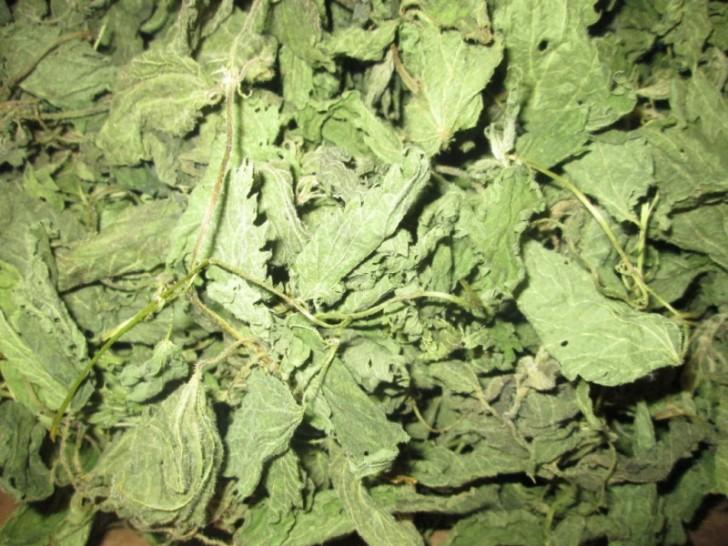
How to stimulate lactation immediately after birth and as the baby grows older
Nature has provided for everything. For most women, milk comes in a few days after giving birth. If the baby was born healthy, it means that he has an active sucking reflex, so during the feeding process the nipples are strongly stimulated and milk begins to form in the ducts. The best and most effective way to start lactation is to put the baby at the breast as often as possible.
But there are situations when the newborn or mother does not feel very well, for example, in the case of premature birth. In premature babies, the sucking reflex is weak or completely absent. Doctors recommend that mothers do not despair, but try to establish lactation on their own: express drops of colostrum, then milk and feed it to the baby.

Expressed breast milk can be stored in the freezer in special bags
To improve lactation, regardless of the baby’s age, experts recommend adhering to the following tips:
- Make sure that you are latching onto your breast correctly. The baby should grasp not only the nipple, but also the areola;
- Do not supplement or bottle feed your baby. It is better to use a spoon or a special syringe (for feeding premature babies);
- spend more time with the child, physical contact is also very important;
- be in a good mood, have more rest mentally and physically;
- feed on demand (the more often the better);
- use auxiliary means to increase milk production (compresses, massage, herbal preparations).
Is nettle good for lactation?
During the period of breastfeeding, pediatricians may recommend nettle for lactation, because a situation often arises when the mother does not have enough milk
Feeding a baby with mother's milk is very important, since mother's milk is the ideal nutrition for the baby. It cannot be fully replaced by any artificial mixture.
Normally, the duration of lactation in women ranges from 5 to 24 months, and during this period its intensity varies. Maximum milk production occurs between 7 and 14 days after birth. Then the secretion stabilizes. A woman’s body can produce from 500 to 1400 ml of milk per day.
With proper feeding and adequate nutrition from the mother, the baby will receive with breast milk all the elements it needs for growth and development.
It is important that during breastfeeding the milk is completely removed from the breast. If the baby is full, but milk remains, it is necessary to express it, since stagnation leads to inhibition of the function of the mammary glands, and lactation decreases
Modern medicine recommends putting the baby to the breast every 2-3 hours, depending on the baby’s needs.
In this case, the baby should be applied to each breast during feeding.
If such a problem arises, you can help strengthen lactation with folk remedies; in particular, women have long used nettle for this.
Healing properties indispensable for women
However, this plant is one of the medicinal herbs that has a wide variety of vitamins and minerals. There is more ascorbic acid alone in its composition than in lemon or currants. It also contains vitamins such as A, which is responsible for vision, H, which takes part in the proper functioning of the nervous system, as well as the normalization of liver function. Nettle also contains vitamin K. This vitamin is responsible for blood clotting, and also helps to avoid osteoporosis, and among other things, strengthens the heart muscle.
This herb is also rich in magnesium and calcium. Magnesium strengthens the muscular system, and thanks to calcium, nails, hair and the skeletal system become strong. The leaves of the plant contain a substance that helps protect the body from bacteria and viruses.
Table of vitamins contained in nettles
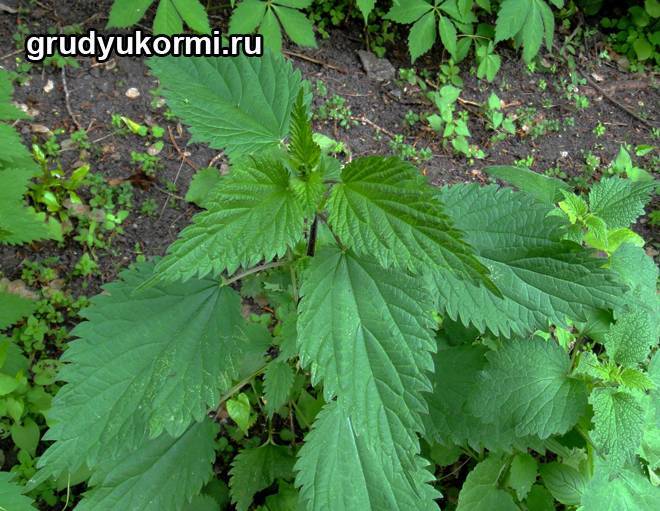
Preparing the decoction
The simplest recipe for preparing the decoction is as follows:
- Two tbsp. l. nettle leaves pour 200 g of boiled water.
- Heat the composition under the lid in a water bath for 10–15 minutes.
- Cool the finished drink, strain, dilute with boiled water (200 g) and take warm 30 minutes before meals.
The drink has a pleasant, slightly sweet taste. You can add honey or sugar to it. Nettle leaves are sold in pharmacies, loose or in filter bags. Both options are equally effective.
If you want to prepare your own nettles, then collect them in green areas, away from businesses and busy roads. Dry the raw materials indoors, away from sunlight.
Stimulation of lactation after cesarean section
Women who have had a caesarean section are more likely than others to experience difficulties breastfeeding. The woman in labor may feel unwell or suffer severe blood loss, after which milk production stops. The fact that there is no milk immediately after the operation does not mean that it will not appear at all. It is necessary to put the baby to the breast, especially after transfer to a regular ward.
The main condition for normalizing lactation is providing the woman with comfortable conditions. You need to rest more, practice co-sleeping with your baby, and eat well at least 5-6 times a day.
Regularly putting your newborn to the breast, especially at night, will significantly increase milk production. Women after a cesarean section can use the same means to stimulate lactation that are used by mothers who have undergone natural childbirth.
Why does milk disappear and is it possible to improve lactation? Read about this in our previous article: Agalactia.

